Singapore is 49 and Bukit Brown is 92! The invitation went out weeks before on the blog, on Facebook, the event of the year at Bukit Brown, celebrating the nation’s birthday. Thank you to all who came, regulars, first timers, old and young, singers and well wishers. The official NDP’14 theme was a good fit :
NDP ’14 (Nations Deceased Pioneers) @ Bukit Brown this year honours the “can do” and caring spirit of our pioneers who helped to forge bonds which built the foundations for SG 50. It is the story of how “Our People” in Bukit Brown made Singapore, “Our Home”.
We promised 3 guided walks, goody bags, eats and music. But the highlight as always is the singing of the National Anthem – this year led by Brownie Mil Phuah, the reciting of the Pledge – this being Raymond Goh’s first ever NDP@Bukit Brown (previous years he was away on business trips) it fell on his shoulders, followed by a minutes silence to remember especially the 4,153 pioneers who have had to make way for the highway. Our resident videographer James Tann captured an NDP on the celebratory Hill 1 festooned by flags large and small, and the pride of over 50 voices.
It has been a momentous past year for Bukit Brown from being on the World Monuments Fund watchlist to be being voted by Singaporeans as their top 3 sacred sites . The good news continued as Claire Leow, co founder of All Things Bukit Brown, shared some more developments .
“We are humbled and honoured to announce that thanks to the nomination by the Singapore Heritage Society, all things Bukit Brown has been shortlisted for the inaugural Singapore Advocacy Awards 2014, under the category of Civil Society Advocate Organisation of the Year.
The winner will be announced Aug 30, but let us say now for the record, just being nominated has been a real honour as a recognition of all that this community has achieved since early 2012.
To date, the Brownies have guided more than 12,000 people, staged two exhibitions, and tried to connect descendents, academics, students and teachers, docents, heritage bodies and communities. We don’t always succeed but we surely give everything a passionate shot! Your unstinting support as a community has sustained us. We have guided rain or shine or exhumations. Behind the scenes, many work hard to raise awareness of the intrinsic value of this historic site, and a few have worked patiently with the authorities for a better outcome.
We thank all of you for your support in our endeavour. It is an understatement to say it has not been an easy mission. But driven by conviction, we have carried the heart of this community. We have become good friends, and made good friends. Inspired by the early groundwork laid by Raymond Goh and Charles Goh, the Brownies have built on a solid foundation to spread the word: this is our heritage, habitat and history – and we appeal to you to join us, and honour our pioneers and save this sacred site.
On this, the 49th birthday of Singapore, we say, Majullah!” Claire Leow, Co Founder, All Things Bukit Brown.
***
Bukit Brown was also highlighted in the national daily Today August 9th Special issue Preserving Memories of a Changing Nation
“In 2012, the two women created a blog, all things Bukit Brown, to provide a platform for people to share memories of the area as well as to raise awareness of the walks they were planning there. Since then, the blog has garnered more than 550,000 views and more than 4,000 members on its Facebook page.
With the help of 40 volunteers called Brownies, the two women have also guided more than 11,000 (now 12,oo0)people on their Bukit Brown heritage trails.
“This shows we made the right move and have won the hearts and minds of the public,” said Ms Lim, now a freelancer in broadcast media. She attributed the positive response to the blog and heritage trails to more than just nostalgia. “It’s a much deeper meaning — a yearning, post- sickness, when old places have to move for new ones.”
Since 2012, all things Bukit Brown has also added a unique twist to the National Day celebrations: While others get ready for the National Day Parade, its members have their own National Deceased Parade. This year, they plan to go on a heritage trail in Bukit Brown to commemorate Singapore’s pioneers for their resilience, contributions to and sacrifices for the country.”
****
Here are highlights from the different heritage trails, behind the scenes set up and the camaraderie and conviviality that took the celebrations from dusk to moonlit night. Thank you to all who came, regulars, first timers, old and young, singers, photographers and well wishers. the Brownies are grateful for your support. Here are your memories:
The Guided Walks by Claire, Bianca, Fabian, Simone and Walter

埋骨何須 故里 盖棺 便是吾盧 Why is it necessary to bury my bones in my ancestral land? The place where my coffin is sealed is my home Tan Ean Kiam, on his tomb at Bukit Brown(photo Philip Holden)
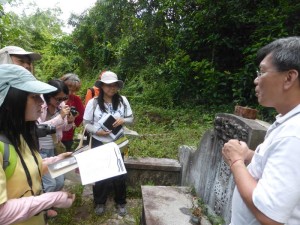
The Chinese Tour led by Walter Lim, had some Hongkong visitors, so Cantonese was also the lingua franca of the day (photo Victor Yue)
Behind the Scenes, A Team of Brownies Setting the Stage for Celebration
Celebrations!
National Anthem as recorded by Albert Ong
Not Just Singapore’s birthday but 3 Brownie Birthdays in August!
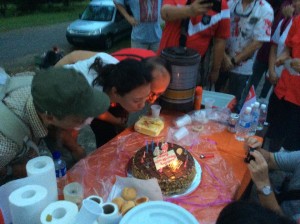
Left to right “Uncle Foo aka Garden Hill” 9 August, Simone Lee 10 August and Keng Kiat 11 August- HUAT AH! (photo Khoo Ee Hoon)
” Deeply reflective and moving National Day observance at Bukit Brown today, with graves already exhumed and half the site sectioned off for the road. There are some things that money can’t buy. A big thank you to Catherine Lim, Claire Leow and others!” Philip Holden.
A big shout out to those behind the scenes and catering:Brownies Victor Lim, Sugen, Mil Jonathan, Raymond, Ee Hoon, Peter, Steven, Mitch, Andrew and tombkeeper Lim Ah Chye. To Lee Kok of Asia Pac Publishers for contributing goodies to goody bags, National Heritage Board for the bags and National Library Board for commemorative books on Khoo Seok Wan.
Preamble : Hungry Ghost Festival
Saturday, 26th July was the eve of what is popularly known as the Hungry Ghost Festival, and less well known by its traditional name of Zhongyuan Jie, which in essence is also about honouring ancestors. It takes place at the start of the Chinese 7th lunar month, and it is when the gates of hell open and the spirits of dead are free to wander among the living for a month. To appease them, offerings and entertainment is laid out by descendants at their homes, but also by temples, business and clan associations. This year, the prediction was that hell’s gates will open at 11pm on the eve of the festival.
The Salvation Rituals
At Bukit Brown, devotees from the Taoist temple Xuan Jiang Dian (Heng Kang Tian ) conducted a “chao du” or “salvation rituals” – considered an act of compassion – specifically for the forgotten and lost spirits there.
This is the 3rd year in a row, Xuan Jiang Dian have done this, ever since in fact news of the building of the highway across Bukit Brown in 2011 was announced. Exhumations of the some 4.153 graves which are in the way of the highway are drawing to a close. So there was added interest in this year’s ritual which was covered by our national newspapers. The National Heritage Board (NHB) shared that a specially commissioned video on rites and rituals at Bukit Brown will be uploaded soon to you tube.
A First Hand Account of “chao du”
The ” chao du” ceremony which was witnessed also by Brownies and other well wishers, started at around 8.3opm . It consisted of the setting up of an altar table with offerings at the major junction of the 4 roads in Bukit Brown which leads to Blocks 1, 5, 4 and 3.
The Taoist priests from China, resplendent in their robes, chanted and walked several ceremonial rounds in the area calling upon lost spirits. There was something soothing in their chanting and the air was redolent with the scent of what must have been a hundred lighted joss sticks. Each participant carried 3 sticks each throughout the 40 minute long chanting.
There was a stillness in the air and the smoke and swish of the robes carried the movement of the night. It ended with the burning of paper offerings and just as quickly as it was set up, the devotees packed up and left, with the the candles planted still burning and the last vestiges of the paper offerings smouldering down to embers.
******
Photo Gallery :

Side View : Off site 3 tablets, set up by Xuan Jiang Dian at Bukit Merah Blk 123 for the wandering spirits of Kopi Sua aka Bukit Brown. [right] for animals killed during agricultural activity (prior to it becoming a cemetery)[centre] for wandering souls[left] for animals killed during construction works (photo and caption by Chua Ai Lin)
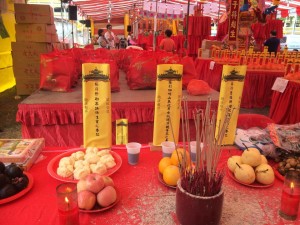
Front View : Off site 3 tablets, set up by Xuan Jiang Dian at Bukit Merah Blk 123 for the wandering spirits of Kopi Sua aka Bukit Brown. [right] for animals killed during agricultural activity (prior to it becoming a cemetery)[centre] for wandering souls [left] for animals killed during construction works (photo Raymond Goh)
Report on Lianhe Zaobao on a ritual conducted last night at Bt. Brown which marked the opening of the 7th month: A group from Heng Kang Tian including 8 Taoist priests conducted the ritual to invite spirits to a salvation ceremony conducted today in front of Bukit Merah View Block 123. The group has been going to Bt. Brown for the past two years to invite spirits from tombs which are not tended to by descendants. The event was attended by Brownies and participants of tours at the cemetery. It was also recorded by the Bt Brown Documentation Team. NHB is currently preparing a 10-15 min documentary on the rituals carried out at Bt Brown cemetery. This will be uploaded to the NHB channel on youtube, “yesterdaysg”, around end next month. (summary by Ang Yik Han) Full report in Chinese:
文物局到武吉布朗坟场 记录“招魂”仪式
王舒杨
联合早报2014年07月27日
今天是农历七月初一,华人传统节日“鬼节”今起开始。昨晚,武吉布朗坟场文史记录小组和国家文物局人员特地到武吉布朗坟场,记录一场由道教团体进行的祭祀仪式。
昨晚约9时,应道教宗教团体玄江殿邀请的八名道长和一名唢呐乐师在武吉布朗坟场进行“招魂”仪式。在道路两侧点亮“引魂”的香火后,他们在锣鼓声中唱诵经文。今明两天他们将在红山景第123座前的道场举行大型超度法会。
数十名积极参与保护武吉布朗文化遗产的公民团体成员也到场目睹仪式。除了这些“武吉布朗人”,不少报名参加坟场导览活动的外国人和游客也纷纷拿起相机拍下这个独具特色的活动。
玄江殿自1996年起多次在武吉布朗坟场举行农历十月初一的“寒衣节”祭祀活动,并从两年前开始在武吉布朗坟场举行七月鬼节的法事,目的是在坟场进行招魂,为他们超度。
根据武吉布朗坟场文史记录小组整理的资料,武吉布朗坟场里的中元节如同一项社区活动,是一种灵界上的慈善事业。信徒所祭祀的亡魂通常与他们没有任何亲属关系,尤其是孤魂。
玄江殿主持陈荣兴(45岁)说,武吉布朗一些坟墓主人没有子孙祭拜,所以希望能为这些孤魂超度。
此外,道家也相信所有生灵皆可超度,而坟墓挖掘过程中伤到蚂蚁等生灵,超度法事也怀有对它们的尊重。
国家文物局目前正在筹备一个10至15分钟长的纪录片,介绍华人社群在武吉布朗坟场的仪式,包括七月鬼节、清明节以及较少人知道的寒衣节。短片料下月底上载到文物局的YouTube频道“yesterdaysg”。
文物局总司长(政策)陈子宇说:“武吉布朗坟场不仅仅是一个埋葬地点,也是华人社群进行祭祖等仪式的地方。我们会记录这些仪式,以继续丰富我们有关新加坡非物质文化遗产的数据库。”
公众可通过在国家图书馆大厦9楼展出的“武吉布朗:记录新知识 开拓新视野”中英文展览,了解武吉布朗坟场上世纪的演变、坟墓设计和民间风俗等。图书馆大厦展览在10月10日结束后,将陆续在宏茂桥、裕廊、蔡厝港和大巴窑图书馆展出至明年1月底。
A postscript : Saturday 2 nd August, descendants are brought to visit the cluster of tombs belonging to Chua Kim Teng, Seow Geok Luan and Chua Eng Cheong by Raymond Goh
“Touching and joyous moments as descendants of Chua Kim Teng’s family pay respects to their ancestors for the first time. Even the ground was pulsating with energy as my compass luopan went haywire” Raymond Goh.
***
Today’s Chinese newspaper Zaobao, reported on a significant find of Lee Kuan Yew’s maternal ancestry in the depths of the forest of Bukit Brown. It is the find of the year (2014) for Bukit Brown researchers and bloggers Raymond Goh and Walter Lim.
Please click on image to enlarge
“The 4 related tombs ranging from 70 to 127 years in Bukit Brown and Greater Bukit Brown (Lao Sua) has been rediscovered by local historical researchers and are valuable resources for the study of our founding Prime Minister Lee Kuan Yew’s maternal grandfather, Chua Kim Teng family history “
The find was discovered on 1 st July. From photos sent to Raymond by a tomb keeper in the area, Raymond subsequently on the same day, verified it on site as belonging to Lee Kuan Yew’s family. The find was kept under wraps to allow Zaobao correspondent Chia Yen Yen, time to conduct further research with family members of Lee Kuan Yew, specifically his brother, Dr Lee Suan Yew contributed this family photo to the article.
The 4 tombs were identified as belonging to Chua Kim Teng and his two wives Seow Geok Luan and Leong Ah Soon, and Lee Kuan Yew’s maternal great grandfather Chua Eng Cheong. They are from Lee Kuan Yew’s mother side ie Mrs Lee Chin Koon nee Chua Jim Neo. Leong Ah Soon’s grave is situated in Bukit Brown Cemetery, the other three are situated close together in a family cluster in Lao Sua Hokkien Cemetery which is located in the hill known as Bukit Brown in old maps. Lau Sua Hokkien Cemetery is adjacent to Bukit Brown Cemetery.

Chua Kim Teng (LKY’s maternal grandfather – centre row, 4th from left), Leong Ah Soon (centre row, 4th from right) Lee Kuan Yew’s mother Chua Jim Neo (centre row, 2nd from left) and her brother Chua Kheng Hoe (last row, second from left) was also related by marriage to Lee family (Family Photo from Lee Suan Yew)
This extended family portrait was taken at 92 Kg Java Rd bungalow where Lee Kuan Yew was born.
Additional info on the house: The Cheng Kee Hean Association celebrated its silver jubilee in June 1918 with the taking of group photograph and a thanksgiving ceremony at the house of Mr Chua Kim Teng (vice-president) in Kampong Java Road.
The link to the FB posting by Raymond Goh when he first identified the tombs here (only accessible if you have a facebook account)
“The inscriptions also attest to the rich burial Chinese culture and customs being practiced in Bukit Brown cemetery. As the dragon dance and flag beats, the gates of Heaven are opened (Chua Eng Cheong’s tomb inscriptions)” Raymond Goh
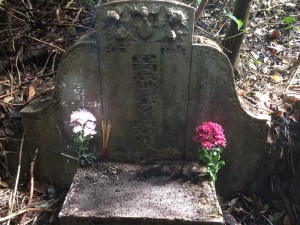
Mdm Seow Geok Luan’s tomb (Chua Kim Teng”s wife), with tomb design 五蝠 (福) 捧壽 five bats (homophonic with fortune) encircling longevity (photo Raymond Goh)
****
Translation of Zaobao Article
The tombs of Chua Ying Chiang and son Chua Kim Teng were rediscovered by local history researchers, Raymond Goh and Walter Lim. Although they have seen the tombs before, it left no earlier impression on them until a news report about the rickshaw puller who saved Lee Kuan Yew’s life emerged recently. Raymond then remembered, Lee Kuan Yew had mentioned his maternal grandfather Chua Kim Teng and grandmother Leong Ah Soon in his memoirs. Coincidently at the same time, Soh Ah Beng, a tomb keeper had used his mobile phone to take a photo of the tombstone and forwarded it to Raymond who later confirmed that the tombs belong to the ancestors of the Chua family.
Zaobao correspondent, Chia Yen Yen together with Raymond Goh and Walther Lim specially made a trip to the deep forested area of Bukit Brown known as “Lau San”, meaning old hill to substantiate the find. They also discovered the tomb of Chua Kim Teng’s second wife, Seow Geok Luan next to Chua Ying Chiang (Chua KimTeng’s father). However, the tomb of Lee Kuan Yew’s maternal grandmother, Leong Ah Soon was missing. On conducting further research and the Bukit Brown’s burial register, they finally located the tomb of Leong Ah Soon.
Two descendants of the Chua family, retired accountants, Seet Keong Fatt and Seet Keong Hoe, told Zaobao, that every year during “Ching Ming”, they would visit their maternal grandmother, Leong Ah Soon’s grave to pay their respects. However, they were no longer aware of the whereabouts of their maternal grandfather and great grandfathers’ graves. The mother of the two Seet brothers, Chua Swee Neo is the the youngest daughter of Chua Kim Teng and Leong Ah Soon. Chua Swee Neo is also the younger sister of Chua Jim Neo (Lee Kuan Yew’s mother). She had married Seet Cheng Kang in a traditional Chinese wedding ceremony in 1937 and their wedding was reported in the press.
Based on the “Memoirs of Lee Kuan Yew”, for a married daughter’s family to live with the in-laws (as was the case for Lee Chin Koon and Chua Jim Neo living with the Chuas) was not accepted in a traditional Chinese family. But to a Chinese Peranakan family from Malacca it was common.
Although Chua Kim Teng was born in Singapore, his father Chua Ying Chiang came from a typical Peranakan family in Malacca. Chua Ying Chiang’s tomb at the 127 year old “Lau San” of Bukit Brown is very large, estimated to be 40 feet in length and 24 feet in width, reflecting on his illustrious life. However, it is a pity that what information about his life that can be found today is limited.
Chua Kim Teng’s second wife, Seow Geok Luan’s tomb is next to Chua Ying Chiang, and much smaller.
According to the old map, the 3 tombs are at the “Lau San” of Bukit Brown.
The inscription on Chua Ying Chiang’s tombstone recorded his death date as April 1887. On the tombstone are carvings of dragons, unicorns, cranes and deer. This reveals the beliefs and importance placed on the “dragons’ veins” and “fengshui” meaning posterity and prosperity.
The other couplets are “龙挺旗鼓天门开、虎拒艮宫地户闭and “排衙之砂真有情、癸向艮流富贵龙” which translates to : “As the dragon dance, and the flags beat, the gates of heaven are open. The surrounding terrain gives support, and prosperous and illustrious the dragon becomes”
The names of Chua Ying Chiang’s son, Chua Kim Teng and daughters: Beow Neo, Tam Neo and Cheng Neo are inscribed on the tombstone. However, based on family tree records, the names of the other two sons, Kim Tiong and Kim Tye are missing from the tombstone.
Chua Kim Teng (1865-1944) outlived his 3 wives. On his tombstone are names of 6 sons and 8 daughters. However, the name of his adopted son, Keng Seng (adopted by wife Leong Ah Soon) was omitted. His other 2 daughters, namely Sim Neo and Siew Neo were also omitted. There is a possibility that that the names of his descendants were copied from the tombstone of his second wife, Seow Geok Luan which explains why the 2 youngest daughters’ names were omitted.
According to Dr Lee Suan Yew, both his paternal grandfather, Lee Yun Long and his maternal grandfather, Chua Kim Teng died during the Japanese Occupation. He was 11 years old when his maternal grandfather passed away and he still remembers his mother Chua Jim Neo making arrangements for his grandfather’s funeral and burial.
Chua Kim Teng was born in 1865 and died in 1944 . As recorded on his tombstone, his ancestors are from Fujian, Zhangzhou, Haicheng, Zhen village (福建漳州海澄陈莊).
Dr Lee Suan Yew has the impression that his maternal grandfather was wealthy, lived in a big house, was generous and often gave his grandchildren money to buy preserved olives, sour plums and other snacks. He said that his brother Lee Kuan Yew was born in his maternal grandfather’s 2-storey bungalow at No. 92 Kampong Java. He has an old photo of the family, including his mother, maternal grandfather and grandmother, aunties and uncles, taken in front of the big bungalow.
The Chua family later moved to another big house at Lorong L, Telok Kurau. Based on a “For Rent” advertisement in the Straits Times dated 28 July 1928, the bungalow at Kampong Java had water and gas supply, telephones lines, a garage and a tennis court. It was a magnificent bungalow.
Dr Lee said that his maternal grandfather had three wives. First wife, Seow Chue Luan and second wife, Seow Geok Luan are sisters. His maternal grandfather had one son and 3 daughters with his first wife and 2 sons and 3 daughters with his second wife. He had 3 sons and 4 daughters with his third wife.
Based on records in the “Memoirs of Lee Kuan Yew”, Leong Ah Soon was a Hakka woman from Indonesia. She was a young widow with 2 young children. Lee Kuan Yew’s mother, Chua Jim Neo is the eldest daughter of Chua Kim Teng and Leong Ah Soon.
According to Dr Lee, besides the Kampong Java and Telok Kurau bungalows, his maternal grandfather owns several properties at Claymore Road. The properties were subsequently sold due to the Great Depression.
Based on old newspaper records, Chua KimTeng was the owner of a market at East Coast. Lee Kuan Yew in his memoirs mentioned that his maternal grandfather owned a large rubber plantation and the family sometimes took the bullock cart to the plantation for vacations.
Although Chua Kim Teng was a successful businessman, he was only actively involved in the mutual aid organisation Cheng Kee Hean Association which was founded in 1893. In November 1921, on the 25th anniversary of the association, a celebration dinner was held at the Kampong Java bungalow. Chua was then the Vice President of the association.
The tombstone of Lee Kuan Yew’s maternal grandmother, Leong Ah Soon is on a hillside of the Bukit Brown cemetery. Although the tombstone is not considered big, neither can it be considered small and is well kept. According to records in “Memoirs of Lee Kuan Yew”, Leong Ah Soon had 9 children. However, on her tombstone inscribed were the names of 7 sons and 10 daughters, a total of 17 children. There were also names of 7 grandsons and 6 granddaughters.
According to Dr Lee Suan Yew, the name of Leong Ah Soon’s adopted son, Chua Keng Seng (formerly Tan Keng Seng – son of sworn sister) was also inscribed on the tombstone. Leong Ah Soon’s daughter, Watt Neo is from her previous marriage. The names of Leong Ah Soon’s sons and daughters which were inscribed on her tombstone include the children of Chua Kim Teng’s first and second wives.
It is interesting to note that the couplet “源前皆赤子,益上是青天” on the tombstone has been amended and it differs from the original couplet “眼前皆赤子、头上是青天” which refers to court officials who are impartial. Does it imply that she treated all her children equally? Another couplet reads“自得山中趣,谁论世上名”. It literally translates to “when you know the pleasures of the hills , who cares about fame in one’s lifetime”.
Not only did Leong Ah Soon marry her daughter, Chua Jim Neo to Lee Kuan Yew’s father, Lee Chin Koon, she also took Lee Chin Koon’s sister, Lee Kim Neo as the bride for her eldest son Chua Keng Hoe.
Lee Kuan Yew, in his memoirs, said that his maternal grandmother had a different view on his education. His maternal grandmother had insisted on sending the young Lee Kuan Yew who was barely 6 years old to a private class in an attap house to learn and recite the Chinese Classics. When he complained to his mother about the difficulties he had learning Chinese, his mother pleaded with his maternal grandmother on his behalf to let him discontinue Chinese lessons. However, his maternal grandmother insisted that he learned some Chinese and transferred him to a private school in Joo Chiat. The school was impressive with 10 classrooms and had between 35 to 40 students per class. The young Lee Kuan Yew still had difficulties learning Chinese. Three months later, Lee Kuan Yew’s mother again pleaded with his maternal grandmother who finally agreed to let him transfer to an English school.
Based on records on Leong Ah Soon’s tombstone, she died on October 9, 1934. She was born in 1881 and was 16 years younger than her husband, Chua Kim Teng.
Based on archival records, Leong Ah Soon had on the eve of World War I, in 1916, with the joint effort of women in Malaya purchased fighter jets as gifts for the British government. She had donated ten dollars.
(Thanks to Elaine Tan for the translation with inputs from Raymond Goh)
李光耀外家先人四古墓密林中寻获
谢燕燕
2014年07月29日
苏亚明、吴安全和李志强(左至右)摄于建国总理李光耀曾外祖父蔡应昌的墓前,这个藏在深山老林的古墓已有127年历史。(严宣融摄)
新恒山亭与武吉布朗四座有70年至127年历史的老墓,最近被本地文史工作者重新发现,成了研究建国总理李光耀外祖父蔡金鼎家族的重要史料。
李光耀的曾外祖父蔡应昌、外祖父蔡金鼎和蔡金鼎第二任妻子萧玉銮的墓,多年来深藏在新恒山亭的深山老林里。蔡金鼎的第三任妻子,也是李光耀的亲外祖母梁亚顺则葬在武吉布朗坟场内。
这四座能为蔡家的家族史提供珍贵史料的老墓,是在本报于6月29日刊登了李光耀与人力车夫高长古的故事后,被本地著名寻墓人吴安全和文史工作者林志强找到的。
谢燕燕 报道
chiayy@sph.com.sg
蔡应昌、蔡金鼎父子的墓,吴安全其实过去见过,但没多加留意,也不清楚墓主人身份,直到阅读了本报《寻找人力车夫高长古》一文,才想起建国总理李光耀在回忆录中提到的外公蔡金鼎和外婆梁亚顺。
更巧的是,他的朋友苏亚明(51岁)正好在那个时候用手机,把蔡应昌墓和蔡金鼎墓的照片传给他,马上引起了他的兴趣。专门帮人打理墓园的苏亚明,从小在陈 牛廊(武吉布朗昔日村子)长大,对新恒山亭和武吉布朗了如指掌。他认识吴安全后,每次发现大型古墓,就会拍照传给吴安全看。
古墓藏在密林里
本月中的一个早上,本报记者随吴安全、苏亚明和林志强走入被喻为“老山”的新恒山亭后,发现蔡应昌、蔡金鼎和萧玉銮的墓确实藏在人迹罕到的密林里,蔡家后人恐怕早已找不到那里。苏亚明是因为经常在山里走动,加上他曾祖父的墓刚好与蔡金鼎墓为邻,才会发现这一组古墓。
吴安全、林志强找到蔡家三位先人的墓后,发现李光耀外婆梁亚顺的墓不在其中,于是翻查旧档案,通过下葬记录册找到她位于武吉布朗的墓。
本报后来走访李光耀的弟弟李祥耀医生,从李医生那里拿到蔡家后人所整理的一份简单家谱,再把这家谱与墓碑上的名字对比,理出了一个头绪来。
蔡家另外两位后人,退休会计师薛强发和薛强和告诉本报,他们每年清明都会到外祖母梁亚顺的墓拜祭,但早已不清楚外祖父和曾外祖父的墓在哪里。如今被重新发现,他们将找时间到坟前祭拜。
这两兄弟的母亲蔡修娘是蔡金鼎与梁亚顺所生的最小女儿,即李光耀母亲蔡壬娘(又作任娘,过去译成认娘)的妹妹。蔡修娘是在1937年与薛清江举行华人婚礼,当时还上报。
李光耀曾外祖父百年古墓极大
《李光耀回忆录》中说,在传统华裔家庭里,结了婚的女儿与丈夫、孩子若住在外家,通常不为社会所容,但对来自马六甲的土生华人家庭来说,这却是常有之事。
能找到的资料很有限
蔡金鼎虽是在新加坡出世,他父亲蔡应昌却是来自马六甲的土生华人,他们可说是典型的峇峇家庭。蔡应昌位于新恒山亭的127年古墓非常大,估计长40英尺,宽24英尺,显示他生前显赫,只可惜今天能找到的资料很有限。
蔡金鼎和第二任妻子萧玉銮的墓就在蔡应昌墓旁边,但规模小得多。
根据旧地图,这三座墓所处的位置就在原来的布朗山。
蔡应昌墓碑上记录着他是在“光绪丁亥年岁次梅月吉旦”即1887年4月去世,碑上面有朱雀浮雕,墓肩有龙的雕刻,供桌下有麒麟、仙鹤和鹿的图案。
墓前对联则显示这是很讲究龙脉与风水的古墓。里头的对联写着“龙挺旗鼓天门开、虎拒艮宫地户闭”,外面的对联是“排衙之砂真有情、癸向艮流富贵龙”。
蔡应昌的墓碑上刻着孝男金鼎和孝女妙娘、淡娘和贞娘,不过蔡家后人所整理的家谱则显示他还有另外两名儿子蔡金忠和蔡金泰。他们的名字为何不在墓碑上则不得而知。
比三名妻子长寿的蔡金鼎(1865-1944),墓碑上刻着六男八女的名字,当中少了梁亚顺所领养的敬成,却不清楚为何还少了两名小女儿心娘与修娘的名字。一个可能性是刻碑文时“抄袭”萧玉銮的碑文,以致漏掉两名小女儿。
萧玉銮是在中国刚“变天”,辛亥革命推翻满清王朝之际离开人世的。她逝于“辛亥十月十六日旦”(1911年12月6日),孙中山当时正从美国回返中国途中,所搭乘游轮一个多星期后抵达新加坡,他还在陈武烈位于花芭山腰的金钟别墅住了一晚。
中国是在1912年1月1日才改年号为民国元年,但萧玉銮的墓已率先启用民国年号,只不过当时情况有点混乱,把国号、年号颠倒用,以致出现“中华辛亥十月十六日旦”和“民国故妣谥玉銮萧氏墓”。
李光耀在外公别墅出世
李祥耀医生说,他祖父李云龙和外公蔡金鼎都是在日本占领新加坡期间离开人世。外公去世时他11岁,至今还记得母亲蔡壬娘操办丧礼的情景。
生于1865年,卒于1944年的蔡金鼎,墓碑上的祖籍是福建漳州海澄陈莊。
在李祥耀印象里,外公相当有钱,住在很大的房子里,为人很慷慨,经常给孙子们钱去买橄榄、酸梅等零食。
洋房很有气派
他说,大哥李光耀是在外公位于甘榜爪哇92号的两层楼别墅出世的,他至今还有一张旧照片,是他外公、外婆、母亲、众多阿姨和舅舅们在那栋大房子前拍摄的全家福。
蔡家后来搬到直落古楼罗弄L的另一栋大房子。根据1928年7月27日刊登在《海峡时报》的一则出租广告,甘榜爪哇的别墅有煤气、水、电话、车库和网球场,是很有气派的洋房。
李医生说,外公娶过三名妻室,第一任妻子萧翠銮和第二任妻子萧玉銮是姐妹,他和萧翠銮生了一男三女,和萧玉銮育有二男三女,和第三任妻子梁亚顺生了三男四女。
根据《李光耀回忆录》的记载,梁亚顺是来自印度尼西亚坤甸的客家妇女,嫁给蔡金鼎之前是育有两名年幼孩子的年轻寡妇。李光耀的母亲蔡壬娘是她与蔡金鼎所生的长女。
李医生说,外公除了拥有甘榜爪哇和直落古楼的洋房,还曾买下克雷摩路(Claymore Road)的好多栋房子,但后来受到经济大萧条影响而将之变卖。
林志强找到的旧报章资料显示,蔡金鼎曾是东海岸巴刹的业主,李光耀在回忆录中则曾提到外公在菜市拥有大片树胶园,他们家有时会坐牛车到园丘度假。
蔡金鼎虽是成功商人,但从旧档案看,他只活跃于1893年创立的互助组织正气轩(Cheng Kee Hean Association)。1921年11月,这个组织庆祝25周年时,曾在蔡金鼎上述甘榜爪哇别墅举行盛大庆祝会,他当时任正气轩副会长。
外婆梁亚顺坚持
要李光耀读中文
李光耀外婆梁亚顺的墓,坐落武吉布朗半山腰,不是很大,却也不小,维持得相当好。根据《李光耀回忆录》,梁亚顺生过9名儿女,但墓碑上却刻着7名孝男和10名孝女,共17名儿女的名字!另外还有7名内孙和6名内孙女。
李祥耀医生说,外婆墓碑上的一名儿子蔡敬生其实是她结拜姐妹的儿子,本姓陈,后来被外婆领养。另一名女儿发娘(也有写成活娘)则是梁亚顺与前夫所生女儿。梁亚顺墓碑上的众多儿女,包括蔡金鼎与两位萧氏所生儿女。
最有意思的是墓前的对联,把原本指为官清廉的“眼前皆赤子、头上是青天”改成“源前皆赤子,益上是青天”。这是否在比喻她公平对待众多儿女,把他们视为“赤子”?另一对联是“自得山中趣,谁论世上名”。
梁亚顺与蔡金鼎除了把女儿蔡壬娘许配给李光耀的父亲李进坤外,还让两人所生的大儿子蔡敬和迎娶李进坤的妹妹李金娘。
李光耀在回忆录中说,这位外祖母对他的教育很有一套看法,还不满6岁便坚持把他送到设在亚答木屋内的私塾,老师每天让孩子背诵古书。
他向母亲诉苦后,母亲代他向外婆说情,但外婆坚持他一定要读些中文书,于是送他到如切台浚源学校。这学校设施像样多了,有10间课室,每班35至40名学生,但年幼的李光耀还是觉得华文难学。两三个月后他再向母亲恳求,这一次外祖母终于答应让他转到英校。
根据坟墓上的记录,李光耀这位坚持要他读点中文的外婆是在民国二十三年九月初二,即1934年10月9日与世长辞。她生于1881年,比蔡金鼎小了16岁。
从旧档案中还知道梁亚顺曾于1916年,即第一次世界大战前夕,联合其他马来亚妇女购买战机送给英国政府,她当时捐了10元。
本报后来走访李光耀的弟弟李祥耀医生,从李医生那里拿到蔡家后人所整理的一份简单家谱,再把这家谱与墓碑上的名字对比,理出了一个头绪来。
新加坡报业控股版权所有(公司登记号:198402868E)
Romancing Taiping (Part 1)
A photo essay by Simone Lee
“I was a little apprehensive at the beginning. Even as a Malaysian, I’ve never heard of anyone raving about a visit to Taiping. But while we were there, I fell in love…………” Simone Lee (Brownie*)
Taiping History (in brief)
Plagued by fierce feuds ( The Larut Wars) between 2 prominent Chinese secret societies(Ghee Hin and Hai San, this once flourishing town in Perak, which prospered from tin mining was said to have been named Taiping – 太 (tai – ‘great’) and 平 (ping – ‘peace’) – after a truce was brokered in the Pangkor Treaty. The treaty was the result of a politically motivated call for British intervention aided by a friend from Singapore, Tan Kim Ching (son of Tan Tock Seng).
Day 1: Taiping Town and Kuala Sepetang
At the sleepy town, we met our guide, Ah Kew (Lee Eng Kew), a freelance writer and field historian. Our first stop: The Old House Museum. One of the earliest 3-storey shophouses built in Taiping, the museum/antique shop retains much of its original architecture.
(please click on images for full size photos and captions)
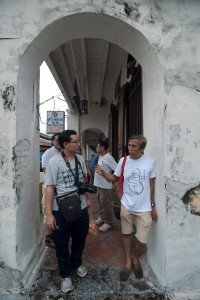
Our very knowledgeable and generous guide Ah Kew (pictured on the right) , who was to share with us personal insights into Taiping’s history and cultural links (photo Simone Lee)

Clockwise from left): – 1) Much of the shophouse, including the wooden spiral stairs are retained 2) A room filled with miniature cars and dolls – 3) Posters of artists and celebrities from the 60’s and 70’s line the corridor (photos Simone Lee)
Charcoal Factory
The next stop surprised everyone. As we drove into the compound of a charcoal factory, the scene took our breath away. The smoke from the kilns filters the sun rays, reminding me of movies with scenes of a dreamy, foggy mornings by the lake, embraced by mountains.
Here, Ah Kew explained the charcoal making process which typically takes several weeks before it is ready to be marketed. In the process, a by-product “‘charcoal water” is distilled from the baking wood. It is bottled and sold as a beauty product – slightly acidic but gentle enough to be used on the skin. I tried some on my face and arms, and instantly my skin felt supple, toned and smooth! Feeling vain, I wanted to order a bottle, which was selling at just RM5, the retail outlet was closed.
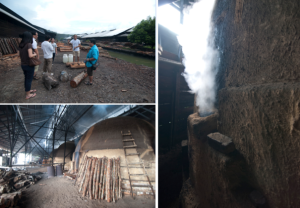
(clockwise from top-left): – 1) Ah Kew explains how logs from the mangrove trees are brought to the factories by boat via the stream.2) Steam from the kiln gushes out as the wood is baked so moisture, evaporates. 3) The igloo-shaped kilns in one of the factories (photos Simone Lee)

Kuala Sepetang’s Matang Mangrove Forest is the largest mangrove forest reserve in Malaysia and was gazetted as a Permanent Forest Reserve in 1906. (photo Simone Lee)
At the mangrove forest, Ah Kew regaled us with stories of 2 notorious pirates with fearsome reputations in the post war era.
Tan Lian Lay once hid bags of rice in a mangrove forest but they were destroyed when the tide rose. After his death, he was immortalised as a deity because his spirit was giving out winning numbers in repentance for his sins. It has been said Tan Lian Lay was also a trouble maker in Singapore. When he was killed in Bagan Api in Riau, Sumatra, a well- wisher from Singapore sent gifts as a reward for slaying Tan Lian Lay’s reign of terror.
Tan Hua Siea aka Raja Laut (King of the Sea) monopolized the shellfish farms and was on Perak’s most wanted criminal list. Despite that, he eluded capture, sheltered by the locals. Even though he was always dangerously armed, he never terrorised the villagers and was revered as the Robin Hood of the coast. What happened to him remains a mystery to this day.
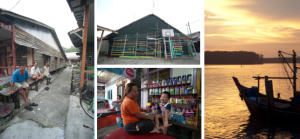
The idyllic village belies its checkered sometimes violent past as hideouts for pirates. (photos Simone Lee)
***
Look out for Romancing Taiping Part II next week
***
*The Brownies’ yearning to connect to history and thirst for adventure, brings them to various locations within and beyond Singapore. The objectives of these retreats are, to study the historical and cultural links to Singapore, and to strengthen kinship amongst the brownies.
(Brownies are the volunteers who conduct regular weekend guided walks and independent research on heritage, habitat and history of Bukit Brown Cemetery.)
Bukit Brown : Documenting New Horizons of Knowledge
Location: NLB 9th floor from now until 10 October’14 and thereafter it will travel to other regional libraries.
The exhibition was officially opened on Saturday 19 July,2014 by MOS (Ministry of National Development) Desmond Lee.
It represents almost one and half years of research and working the ground documenting some 4,153 tombstones which are affected by the building of a new highway across Bukit Brown, by a team under the leadership of Dr. Hui Yew-Foong, an anthropologist with ISEAS.
We have observed the team hard at work over these years, joined some of them during Qing Ming and exhumations as observers and friends of the family of descendants, and the exhibition is a comprehensive and compact expression of what they have uncovered, shared with the public with insight and interesting artefacts , enhanced by new technology. We recommend it as a “must see” and “ground breaking” for insights shared of customary practices and traditions of burial customs and respect for ancestors.
An extract from the media release:
Documenting New Horizons of Knowledge” assembles a diverse range of documents,maps, photographs and objects to demonstrate how a cemetery can open a window to Singapore’s historical past and cultural present. Through a multi-disciplinary approach employing cutting-edge methods, techniques and technology, the exhibition will bring to the fore new horizons of knowledge unveiled through the documentation of Bukit Brown.
The exhibition opens with the origins of the cemetery, as a project of the Municipal Commissioners in early 20th in 1973, will be illustrated through maps and aerial photographs. Next, through explication of tomb inscriptions, tomb typology and the material culture of the cemetery, the exhibition will demonstrate Singapore’s connectivity to the region, China and the world.
While the cemetery is a burial space for the dead, it is also a space for the living at different points of Singapore’s history and ritual calendar. This will be illustrated through the life of kampongs that used to be situated in the vicinity of the cemetery and the life of the cemetery during Qing Ming and the Seventh Month Hungry Ghost Festival.
As data for the graves was collected and organised within a Geographic Information System (GIS) framework, the exhibition will present a Centrepiece where visitors will be able to access data related to specific graves through a map-based database on a touch screen monitor.
Finally, visitors will get a glimpse behind the scenes of documentation work, to get a sense of the different methods, techniques and technologies that were employed in the course of documentation. These range from balloon photography to 3D scanning, from interviewing to filming, and from the work of architects to the work of archaeologists.
****
Highlights of the Exhibition Opening
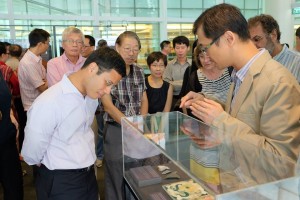
Dr Hui Yew-Foong, explaining material culture to MOS Desmond Lee during the curator’s walk through (photo Ang Hock Chuan)
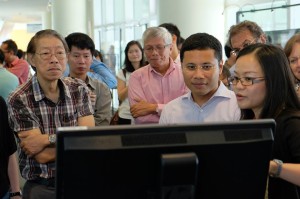
Dr. Natalie Pang (NTU) who worked on the IT applications for the centerpiece map demonstrating how it works to MOS Desmond Lee (photo Ang Hock Chuan)

The urn which used to house re-interred remains from other cemeteries to Bukit Brown (photo Raymond Goh)
This urn was used to re-inter bones exhumed from an older cemetery. It was from the grave of Madam Khoo Siok Hui, who died in 1836. Her grave was the oldest among those documented at Bukit Brown. Madam Khoo and her son Chee Yam Chuan were among the early settlers of Singapore. Mr Chee later returned to Malacca and made his fortune in tin mining in Selangor. Today, the Chee Yam Chuan Temple Trust continues to flourish in Malacca and Madam Khoo’s ancestral tablet can be found in the temple. The story behind this family shows the close links between Malacca and Singapore in the early years. It was Raymond Goh who first deciphered the inscription and unraveled the connection.

Treasure trove of jade bracelets worn by the women and traditionally buried with their wearers. (photo Ang Hock Chuan)
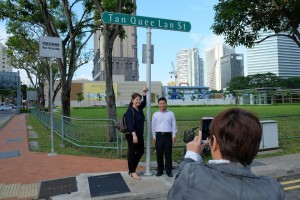
Descendant Serene Tan of pioneer Tan Quee Lan, gets one for the album when MOS Desmond Lee sportingly agrees to walk with her to visit her “great great grandfather’s road” ( photo Ang Hock Chuan)
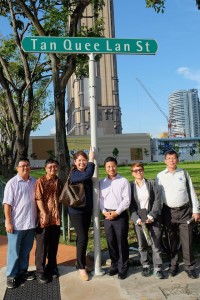
They were accompanied by a entourage of brownies who have been sharing Serene’s journey of reconnecting with her ancestors since Raymond Goh found the Tan Quee Lan cluster re-interred from another cemetery at Bukit Brown (photo Ang Hock Chuan)
A video at the exhibition features Serene Tan and her family observing the first Qing Ming at Bukit Brown in 2012 after Raymond Goh discovered the cluster of Tan Quee Lan tombs, and shows how the cluster underwent a renovation makeover by Serene and her cousin LT Tan who met at Bukit Brown itself. Serene’s story can be read here
The cluster is not affected by highway.
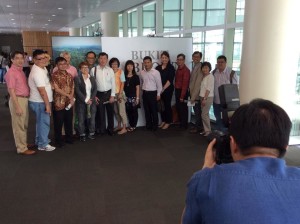
Brownies, academics, descendants, members of the documentation team at the exhibition (photo Khoo Ee Hoon)
“….to everyone who came and supported the launch, and most importantly, supported us and helped us generously with our research over the last 33 months. One of the purposes of the exhibition is to acknowledge all your contributions and I hope it accomplished that.” Dr Hui Yew- Foong, Curator of Exhibition on a FB posting.
Look out for 2 specially curated walks by the Brownies in conjunction with the exhibition in August (English) and September (Mandarin).
Photos taken of the exhibition courtesy of Brownie Ang Hock Chuan on Facebook here
Read more about the exhibition by the Rojak Librarian here
Disclaimer: By agreeing to take walking tours of Bukit Brown Cemetery, I understand and accept that I must be physically fit and able to do so.To the extent permissible by law, I agree to assume any and all risk of injury or bodily harm to myself and persons in my care (including child or ward) Please read if you are attending our guided walks for the first time, useful info on safety : Getting There/游览信息 If you have a facebook account please register on the FB links provided unless otherwise stated. There is also a walk by post museum in the after, please see details below for registration.
For all walks:
Please bring umbrella or poncho and sun protection.
Please wear covered footwear.
Please bring mosquito repellent.
Please bring sufficient drinking water.
Meeting place for all Walks : At the Lor Halwa Main gates at Bukit Brown
Sat 26 July’14 : 6.30pm – 8.30pm : A Journey into the Past with Andrew Lim
Follow Andrew for an evening stroll through Bukit Brown cemetery where he will share stories of the Past. We will go to a “mystery” location if time permits.
PLEASE BRING TORCH LIGHTS FOR THIS WALK
FB registration here
Mon 27 July’14: 9am – 11.30 am: Peranakan Tile Appreciation with Victor Lim
Join Victor Lim on his tour through the cemetery where he will focus on the various tiles used in the tomb designs.
Learn more about “Peranakan” or majolica tiles from our tiles expert!
FB registration here
Read more about the tiles here
by Joshua Ng
Instead of enjoying a quiet and uneventful Saturday, I chose to spend it at a live tomb measurement exercise. Armed with a trusty can of mosquito repellent, jeans and covered shoes, I arrived at the Bukit Brown Main Gate at 3.30pm. It was 35 degrees Celsius and I started to doubt my decision.
After a round of introductions, I was assigned to a team with Wei Ming (the drawing maestro), Andrew and Simone who are Brownies (volunteer guides). We had met briefly during the previous week’s theory and briefing workshop at NLB.
Our assigned tomb was Tan Ean Kiam’s wife, Ye Yan Niang (葉焉娘). Our task was to measure and draw the front view, section view and the plan view of the tomb.
Initially I was wondering why we needed four people to measure a tomb. It only made sense when we began our work. The curves, elevation and non-rectilinear structure makes it really hard to get an accurate reading. We had to use strings, bamboo sticks, IKEA flexible paper rulers, a metal tape measure as well as insect repellent to get it done.
The little insects that make their homes around the tomb were not amused — I even got a few ant bites on my hands. Some even crawled up my covered shoes and jeans and bit my calves.
Thankfully, after three hours of hard work, we finally finished our sketch. Our drawings were not the best. We committed at least one mistake, which was to assume that the sides are mirror images of each other. Chee Kien told us that we should not assume but measure and draw the tombs just as they are found. He pointed out that sometimes in a “couple” tomb, part of the tombs may be intentionally elevated so that the “water” will flow towards the descendants of one side.
This is not the first insight I gained from these two weeks of tomb measuring. I also learned that the different dialect groups have very different tomb designs. The one we measured clearly had a Hokkien design. Besides that, only the tombs in Bukit Brown have special bricks backing behind the head stone. It would have been very expensive to import bricks from China, so brick making was one of the earliest industries in Singapore.
As our assigned tomb was Tan Ean Kiam‘s wife, I figured he must have been some important person. I looked him up and found out that he was one of the founding members of OCBC Singapore. And he was also one of the founding members of the Tong Meng Hui (同盟会), which supported Sun Yet Sen’s revolutionary effort.
Another unique feature of this tomb is that the history of Mrs Tan was written by Tan Ean Kiam himself. According to the Brownies, Tan Ean Kiam’s own handwriting was inscribed on the body of the pedestal altar. Other than the fact that Tan Ean Kiam was alive when his wife passed away, we also know that he must have loved his wife a lot to do something so unusual as to personally inscribe her life story.
What amazed me the most is the fact that such a simple exercise like tomb measuring could connect the dots in my understanding of those who went before me. It makes me wonder what interesting facts I can discover from my grandparents’ tomb. Qing Ming (清明) would have been more fun if we were told about all these unique cultural factoids.
Mrs Tan’s tomb is just one tomb. There are about 4,000 tombs that are going to be destroyed without proper measurement and documentation because of the building of a highway that will cut Bukit Brown into half. Who knows what other important life insights we might have missed by not preserving and treasuring the stories of those who went before us.
There are 100,000 graves at Bukit Brown. Imagine how much time and effort will be needed to document them all. And as a digital heritage enthusiast, I can’t help but wonder if there could be better and faster ways to do this. Looks like my journey have just begun.
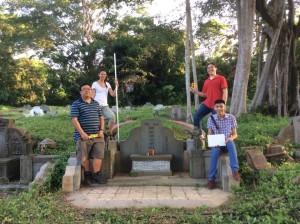
One for the album with the full team. Andrew on the left , Simone, Joshua and Wei Ming with his drawing, (photo Ee Hoon)
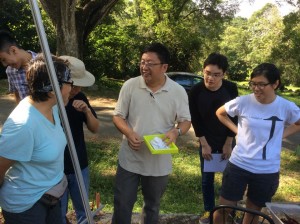
Dr Lai Chee Kien (third from left) sharing a light- hearted moment with his students (photo Ee Hoon)
***
Editors note
Documenting and taking precise measurements provide valuable data to analyze the proportions and variations through IT applications and ultimately relate it to Feng Shui. Tombstones are not just built, they are “feng shui’ed” Citizenry participation in a project like this is crucial because of the sheer size of Bukit Brown and because it signals a deeper engagement of ordinary people in wanting to understand all aspects of Bukit Brown. So kudos to Lai Chee Kien for this initiative and the first batch of participants for signing up. Hopefully there will be more.
What the tomb measurement workshop covered here.
For the first time Bukit Brown has been included in the Singapore HeritageFest with partners Singapore Heritage Society.
The walks are free but registration is needed via the Festival website only here
Registration opens 1 July, 2014. Spaces are limited so register early to avoid disappointment!
Bukit Brown in the City
Saturday July 19 & July 26, 4pm – 6.30pm
A number of pioneering settlers of 18th and 19th century colonial Singapore who were buried in the Chinese cemeteries of the Greater Bukit Brown Complex (including the first Chinese Municipal Cemetery) are today still remembered by streets and buildings bearing their name.
The activities and efforts of these movers and shakers – many of whom were members of leading Chinese families in other contemporary European colonies – contributed significantly to colonial Singapore’s transformation, from a regional entrepot port to a modern and globally significant trade and finance hub, the enterprise envisaged at its founding in 1819![]()
“Bukit Brown in the City” , takes you on a guided walk that covers Raffles Place; Boat Quay; Chulia Street (formerly Kling Road); Phillip Street; Telok Ayer Street; Club Street and eventually ending at Bukit Pasoh Road. Experience what life was like and what has changed over the years in old downtown Singapore.
The City in Bukit Brown
Sunday July 20th & 27th, 9am – 11.30am
Between 1922 and the period of the Second World War, a majority of the Chinese residents of Singapore were buried in Bukit Brown cemetery. Some of those buried here, were well-known and distinguished pioneers like Tan Ean Kiam; Gan Eng Seng; Tan Chor Nam; Lim Chong Pang; Tan Kheam Hock; Ong Sam Leong; Tan Boo Liat; See Tiong Wah – and they were leading contributors to the economic, social as well as cultural life of Singapore.
With “City in Bukit Brown”, we invite you to join the “Brownies” who will introduce you to the tombs of these prominent pioneers who landmarked street names and places all over Singapore. Listen to accounts of their lives, their fascinating backgrounds and the endearing legacies they handed down to our generation today.”
*****************************************************************************
About the Guides:
Alex Tan Tiong Hee, “Curator” and lead guide of “Bukit Brown in the City”
Alex, who studied law in England, was brought up on the lap of history. He was very close to his father, the late Tan Yeok Seong, who was a historian and scholar, as well as a publisher of educational textbooks for schools in Singapore. From his father was nurtured, an acute appreciation for the colonial history of Singapore vis-a-vis developments in China at that time Alex, lends to this heritage walk, his personal experience of historical places and the pioneers who are buried in Bukit Brown. Alex is an Executive Committee member of the Singapore Heritage Society.
The Brownies: The Brownies are the volunteers who have been spending their weekends conducting heritage walks at Bukit Brown since 2012. To date, over 11.000 people have visited Bukit Brown in organized walks. Inspired by positive responses from the public, the Brownies would like to spread and share the collective stories of the pioneers in Bukit Brown to the rest of the island. Chew Keng Kiat who is curating “The City in Bukit Brown” has conducted 120 guided walks at Bukit Brown.
More on the walks:
The Bukit Brown in the City and the City in Bukit Brown walks were specially curated for the Singapore Heritage Festival so as to storyboard a direct connection between two places – the City and the Cemetery. The former which stretches from the present Raffles Place to Club Street landmarks the commerce and business networks of our colonial past; the latter, the contributions of pioneers buried in Bukit Brown and our migrant history.
Many of the places within the city which served as offices for banks, shipping and trading houses no longer exist in their original physical form, but they are nonetheless still landmarked by the names of the pioneers who breathed life to them. The handful that still exist physically have been re-purposed to keep up with the times.
Consider “The Arcade” in Raffles Place and the connection with number 26 Boat Quay. The Arcade of yesterday was the offices of Guthrie; 26 Boat Quay – today “Penny Black” – was the business premises of Tan Kim Ching, eldest son of Tan Tock Seng. Both Guthrie and Tan Kim Ching were the builders of the Tanjong Pagar Dockyards – the precursor of what became the Port Authority of Singapore.
Some 10 doors away, 17 Boat Quay (present day OUB concourse) does not exist today, but back in the day it harbored a political fugitive from China. Kang You Wei was the architect of the failed movement to reform and stem the decline of the Imperial Qing from corruption and systemic abuse. The man who provided him refuge, Khoo Seok Wan, was an intellect and poet who inherited his father’s vast fortunes founded on rice trading of which number 17 was the office.
The City was more than just a place of commerce, it was a gathering of prevailing social, economic and political thought congregated at the Goh Loo Club, a gentlemen’s club, the last stop of the walk.
As such the walks are bespoke in nature, drawing on the personal as well as the broad strokes of the historical context of the life and times of the pioneers buried in Bukit Brown, and their web of connections as the elite of the day. But though elitist in make-up, it was their collective actions that had reflected their concerns for the larger populace and how to uplift their lot in life.
In contrast, with the City, the Cemetery has better withstood the test of time until plans were announced for an 8 lane highway which will slice it into half. As a burial ground for the Chinese from as far as back as the late 1800s, the Cemetery with 100,000 graves has been fertile ground for a group of volunteers called “Brownies”, who have been sharing what they have learned about the life stories of the pioneers in the City in their guided walks. The tomb of Tan Kim Ching is inscribed with Qing imperial titles as well as titles from Siam, Japan and Russia.
As a complementary to the City In Bukit Brown, the walk in the Cemetery is a gateway into another dimension of their life stories, the compelling inscriptions and the architecture of the graves.
by Norman Cho
In 2011, I discovered the grave of my paternal grandfather, Cho Kim Leong at Bukit Brown Cemetery. Since then, I have been trying to locate the tomb of his father, Cho Boon Poo (Cho Poo), who was laid to rest in Malacca. I had absolutely no clue as to which cemetery he was buried. Bukit Cina and Jelutong cemeteries came to mind but these are huge cemeteries with more than a hundred thousand graves each. They are maintained by the Cheng Hoon Teng Temple but pre-war records are unavailable. It seemed that I had hit a dead-end!
However, miracles do happen. To me, these are little blessings from above. Perhaps, the old man had wanted his descendants to visit him and had influenced how things turned out. It must have been decades since the last time any descendants paid their respects at his tomb. He must have known my sincerity and had helped me along without my knowledge. The breakthrough came in April 2014. A relative whom I had never known, contacted me via Facebook to introduce himself as the maternal great-grandson of Cho Poo, after he had discovered that we have matching ancestors from an online Family Tree software on the internet. 70 year old Vincent Lee was descended from Cho Poo’s eldest son, Cho Kim Choon, while my paternal grandfather, Cho Kim Leong, was the third son. He resides in Australia and was planning a trip down to Singapore in April 2014. He requested my assistance to put him in touch with the relatives in Singapore.
It turned out to be a blessing for me! I talked to my eldest aunt, Rose Cho (88 years old), to ask for the contacts of other relatives from the Cho clan. That was how I found aunt Elizabeth Cho (62 years old), who was the only child from the fifth son, Cho Kim Hock, a famed state badminton player for Malacca in the 1930s. We organised a dinner for our overseas relative and his wife. During dinner, I had a nice chat with Elizabeth – whom the family affectionately calls Bert – about Cho Poo. She told me that her only visit to his grave was when she was a child of 9 years old. That was more than 50 years ago! Her father who was the only surviving son at that time dreamt of his father asking him why he had not visited him in such a long time. Heeding the call, he brought his wife and daughter to pay their respects to his father. Since then, he had visited the grave alone every year till several years before his death in 1990.
Aunt Elizabeth, had the memory of an elephant! She vividly recalled that the cemetery was about a 40-minutes-drive from the Malacca Town, but had no inkling about the name of the cemetery. She further described that the cemetery was sliced into two by the main road, there was a cemetery on the left and another on the right, and Cho Poo’s was on the right. The tomb was relatively large and on a gentle-sloping plain. It faced a vast and beautiful paddy field. She added that the cemetery was on the land which once belonged to Cho Poo and was probably the private burial ground of the Cho family. Later, when the family was not doing well financially, it was sold to the Malacca’s Eng Choon Hway Kwan and it became a cemetery for the Eng Choon community. She thinks that the tomb should still be there, given the leisurely pace of development in Malaysia. She asked if I would be able to find the tomb. I told her that I could try. All her clues were useful, except for the paddy field. I told her that I doubt the paddy field in her memory still exists. Nevertheless, I took whatever clues that I could use and converted them into intelligent information.
Firstly, I eliminated Bukit Cina as it was near Malacca Town and therefore could not be a 40-minutes-drive. Next, I looked at the map of Jelutong cemetery but it was not sliced into two by any road. I asked a few Malaccan friends of other lesser-known cemeteries and searched the Google Map for them. Finally, I found a relatively small cemetery, probably no larger than 20 acres, which was dissected by a main road. It was away from the Malacca Town and would probably take about 30 minutes to get there by car. This was the Krubong Cemetery. To be certain that I had located the correct cemetery, I contacted a Malaccan friend who verified that this cemetery is indeed managed and owned by the Eng Choon Hway Kwan. He helped me to obtain the mobile contact of the tomb-keeper to locate the grave. With modern technology, I communicated with the tomb-keeper via Whatsapp to economize on the phone bill. Amazingly, he found the tomb the very next day. The search was completed successfully in less than a week since I started piecing the information together!
I informed aunt Elizabeth who was extremely excited and delighted with the news. We decided to go on a trip to Malacca to pay our respects to our common ancestor, Cho Boon Poo. He was the first ancestor who came to this part of the world to carve a better life for himself and his family. By braving the elements to come to the land across the Southern Seas, he had changed his destiny and that of all his descendants. It was through sheer grit and hard work that he built a successful business and owned vast plantations in Malacca and Seremban dealing in palm leaves, gambier, tapioca and rubber. We all had to be grateful to him for being able to lead good lives in Malaya and Singapore for six generations and counting. He married nyonya wives and that was how my Peranakan roots came about. Being a strict father, all his children were well-brought up and a few of his descendants took on key positions in the civil service.
I was told how strict he was about punctuality. The family would have dinner at 7pm sharp and everyone was expected at the table. Nobody could join in once dinner was served. If you missed dinner, it meant that there would be no dinner for you. During one occasion, his fourth son, Kim Tian came home late but the kind servant saved some food for him. When found out, the servant was sacked. He had a strong character and was on the board of the executive committee of the Eng Choon Hway Kwan.
We arrived at his grave on the morning of 23 June 2014 and I noticed that his tomb was the largest amongst the 50-odd tombs in the vicinity.
What captivated me were the Peranakan tiles (Majolica tiles) which adorned his tomb. No other tombs in the surrounding area had this feature. I was told that having Peranakan tiles on the tombs was not widely popular with the Malaccans. Unlike in Singapore, figurines of the Golden Boy and Jade Maiden were conspicuously absent in Malaccan tombs of even the very wealthy. The tomb used to face water-filled paddy fields which are supposed to be auspicious – water and rice. Unfortunately the paddy fields had since given way to modern development. Cho Poo’s tomb seems to be steep in Fengshui elements : the front courtyard of the tomb forms part of a hexagon instead of the normal rectangle or semi-circle. Along the perimeter of the front courtyard lies a water catchment channel which would collect water when it rains. This had since been covered with soil. The tomb shoulders are angular but eventually taper to form convoluting arms that seem to embrace the courtyard. Likely, it symbolizes a firm hold on wealth.Through the tomb inscriptions, I found the names of one of his wives (Lee Hong Neo) and that of the male descendants – sons, grandsons and even great-grandsons! He died at the age of sixty-nine in 1930. My aunt offered joss-sticks and joss-paper as a form of respect to our ancestor.
This trip has been very fruitful not only about finding out more about Cho Poo and paying our respects to him, but it has built a closer bond between aunt Elizabeth, her husband and I, even though we had known each other only recently.
More on Norman Cho’s journey of discovery, here
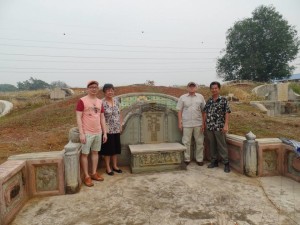
Family photo taken with the tomb-keeper. (L-R): Norman Cho, Elizabeth Cho-Tan, Peter Tan, Tomb-keeper Liow. (photo Norman Cho)
In a report, published on Sunday, 22 June, 2014, Bukit Brown emerged as among the top 3 sacred sites in Singapore, voted by readers in a Straits Times poll.
On learning of the news, Claire Leow, co founder of All Things Bukit Brown reflects:
“To see the Singapore Heritage Society recognised is most apt, for they sparked the civil society response back in November 2011.
To see the Brownies identified as a group is itself moving, as this disparate group of volunteers, heritage enthusiasts and selfless sharers of knowledge and skills has been utterly inspiring. You don’t get more organic than this community, active on site, offsite, beyond keyboards and in cyberspace. Hats off to sifu Raymond Goh and Charles Goh for their inspiration.
And to see others rally behind the Brownies, to cheer us on, to lift us up when we are down, to join us when we utter the rallying cry to stand up and be counted, to share sunny weekends and stormy ones at Bukit Brown, and just patiently adding to the knowledge we are just uncovering day by day, gently correcting our mistakes, boldly stepping in with expertise, shaping the very history of this campaign. Amazing. Very moved……”
Bukit Brown – one of the three sites Singaporeans voted as a sacred place.
******
The overgrown graves stretching for 200ha bang amid the city bustle make for a restful, peaceful spot rare in urban Singapore.
But when Bukit Brown Cemetery was slated for redevelopment for roads and residential buildings, it was more than its lush beauty that resulted in that rarity in Singapore – vocal protests to preserve it.
The site tugged at Singaporeans’ heartstrings, being the resting place of many forefathers of the country, a living repository of the Chinese diaspora’s tomb culture and design, and where descendants today visit for traditional rituals such as tomb sweeping.
Two civil societies – the Singapore Heritage Society and heritage enthusiasts who dub themselves “the Brownies” – organised petitions and embarked on efforts to document tombs.
No substantial concessions were made by the Government, however, to save the site from an eight-lane road running across it. It is also slated for residential development beginning with its southern portion.
Yet, it’s among the top three sites that Singaporeans deemed as “sacred” places in a recent Straits Times poll.
The poll itself followed a call by academic Kishore Mahbubani, dean of the Lee Kuan Yew School of Public Policy, for a list of sacred spaces and places to foster a love for Singapore, to help it fully become a true city.
Singapore already has essential aspects such as “busyness” and being “safe”, he said in a commentary in The Straits Times, citing American urban geographer Joel Kotkin. However, it lacks the sacred, he said, which Kotkin defines as any unique institution or spot “that (makes) one feel an irrational commitment to a place”.
Certainly, pockets of the population saw the Bukit Brown protests as verging on irrational, given the need for more roads in congested Singapore.
Still, Professor Kishore’s commentary comes amid increasing efforts to make more of Singapore’s heritage, such as the conservation bid by Pearl Bank Apartments’ owners in April.
And it puts the spotlight on the approach to heritage preservation. Insight looks at the challenges and what more might need to be done.
Blunders of the past
In 2004, Singapore’s red-brick National Library building was unceremoniously razed to the ground to make way for the Fort Canning Tunnel.
Built in 1959, it was considered by some as architecturally undignified compared with its grander neighbour, the National Museum of Singapore.
Despite extensive efforts by the community to save the space – with a normally passive public penning angry forum letters in the media, and architects such as Mr Tay Kheng Soon proposing alternatives, including re-routing the tunnel – the dissent was swept under the carpet.
Experts say this marked a turning point as it sparked a rise in civic activism and was when Singapore’s conservation movement took root.
It crystallised the idea that heritage conservation and preservation goes beyond protecting splendid colonial buildings to encompass our social and cultural soul.
Retired shipping manager Yeo Hock Yew, 65, says the library had been part of his life since he was a schoolboy studying at nearby St Joseph’s Institution.
“In my university years, I headed there to do research and, as a father, I brought my children there every Saturday morning.
“It was part of the whole landscape of bookshops from the Bras Basah row and the MPH building in Stamford Road. If you couldn’t afford buying from these places, you headed to the library.”
During Singapore’s early years as a new nation in the 1960s and 1970s, swathes of the country fell victim to the wrecking ball. The Government’s main priority, understandably, was to improve living conditions and build up the economy.
Still, awareness of the need to save heritage sites began to emerge. In 1971, the Preservation of Monuments Board (PMB), which last year became the Preservation of Sites and Monuments (PSM), was set up to provide legal protection for national monuments. The division now falls under the wing of the National Heritage Board (NHB) and its role includes offering monument owners guidance and regulatory support.
The board itself is the big daddy of Singapore’s heritage custodianship, promoting heritage appreciation through managing its national museums, documentation and outreach efforts.
Then there is the Urban Redevelopment Authority (URA), established in 1974 and charged with studying old buildings for possible conservation as part of land use planning.
On the private scene,the Singapore Heritage Society, a non-governmental organisation, was established in 1987.
Academics note that people are talking more avidly about heritage than they did 10 to 15 years ago. “People have grown more expressive about protecting their heritage. It has become part of public discourse,” says Professor Johannes Widodo.
This has also given rise to the recognition that there are new categories of heritage which deserve protection……Read on here
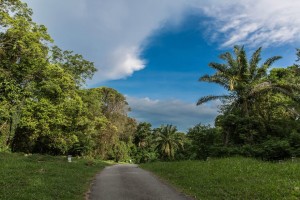
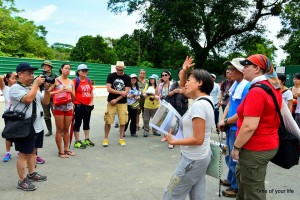


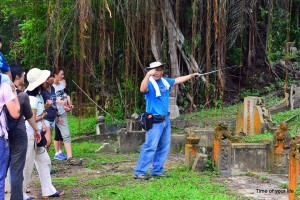
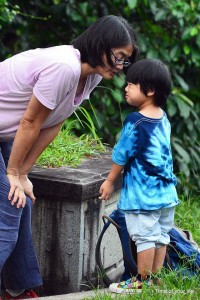

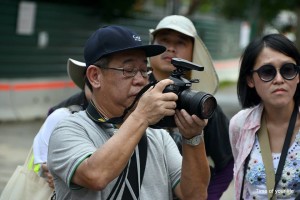
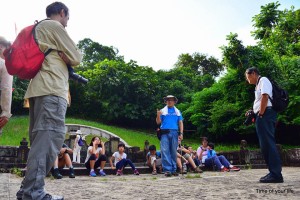
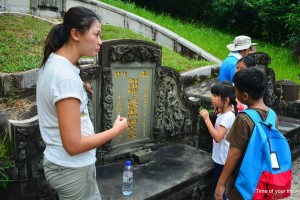


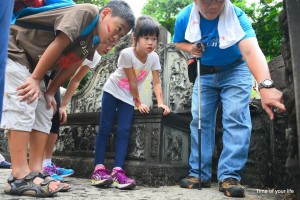
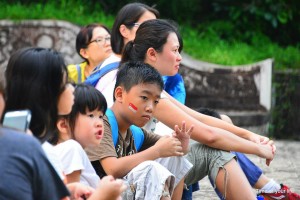


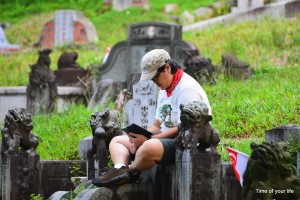

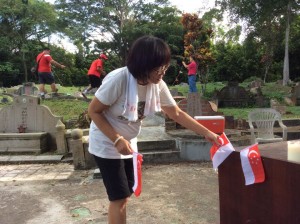
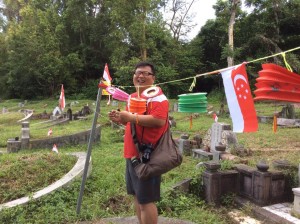
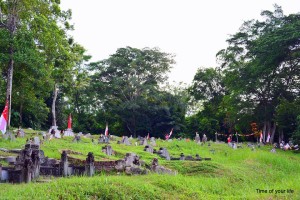
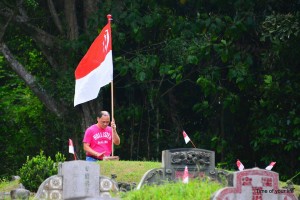
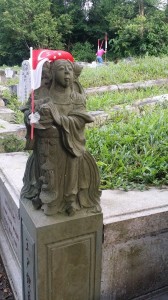

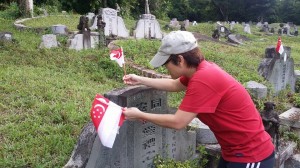
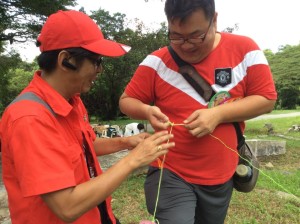
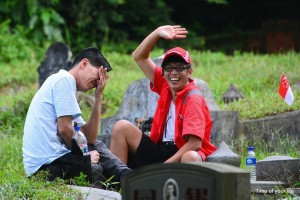
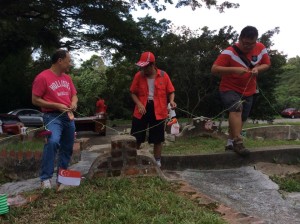
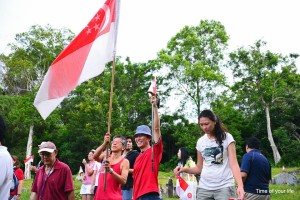
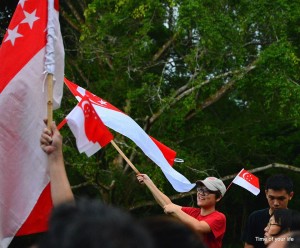

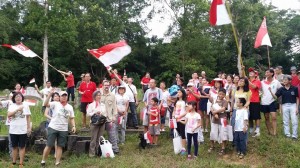

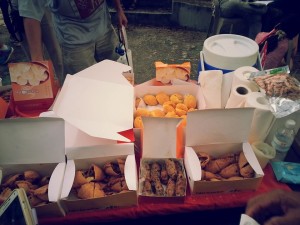
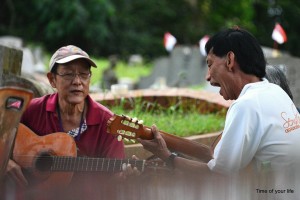
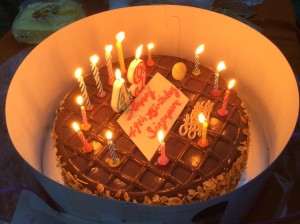
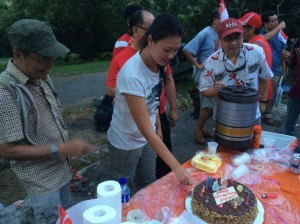

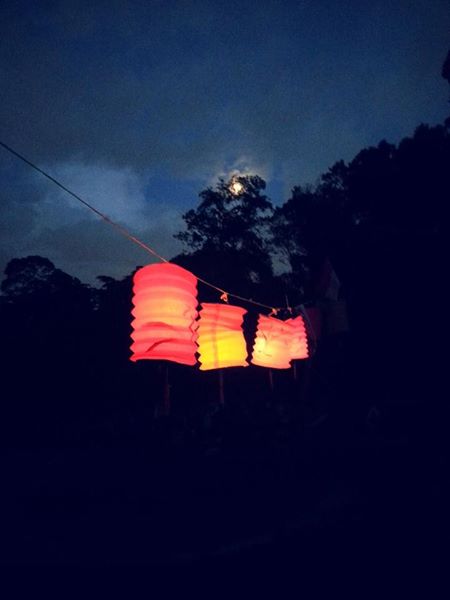

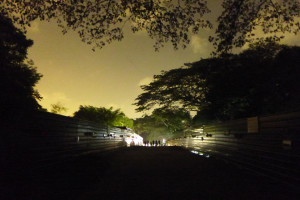
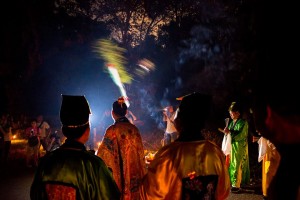

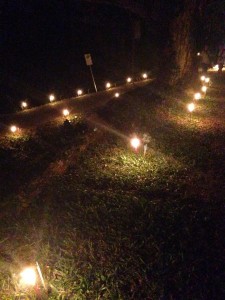
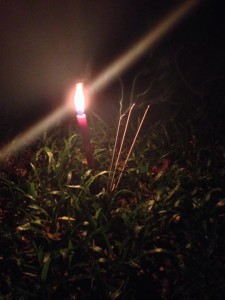
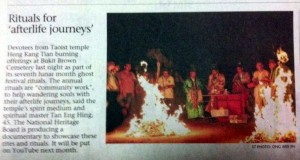
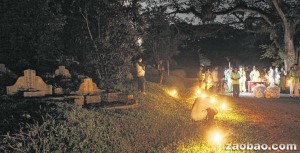
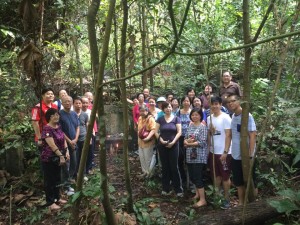

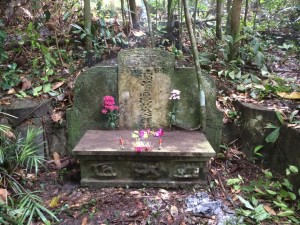
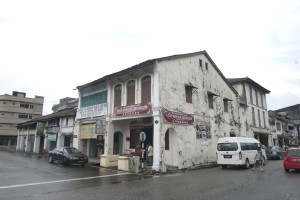

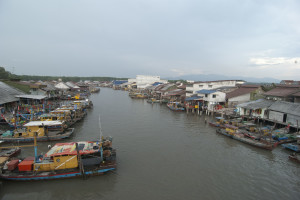
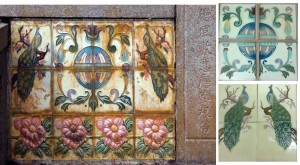
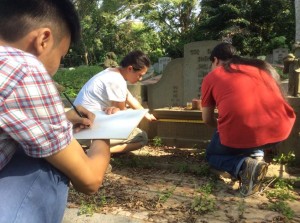
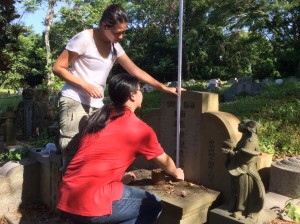


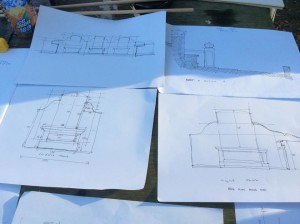
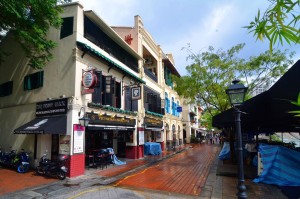

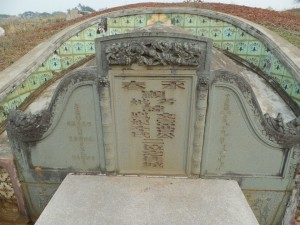
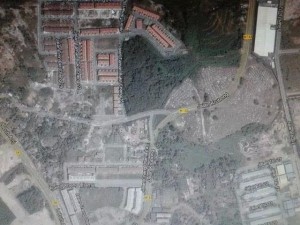
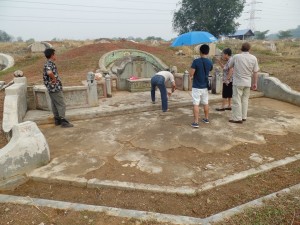
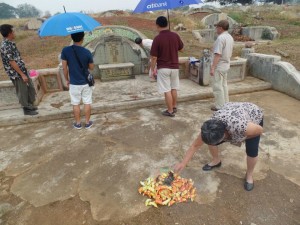
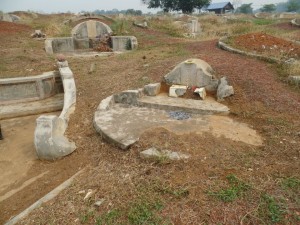

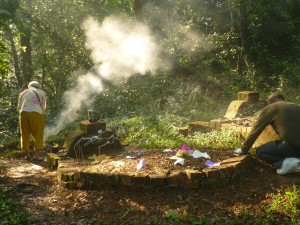
Recent Comments